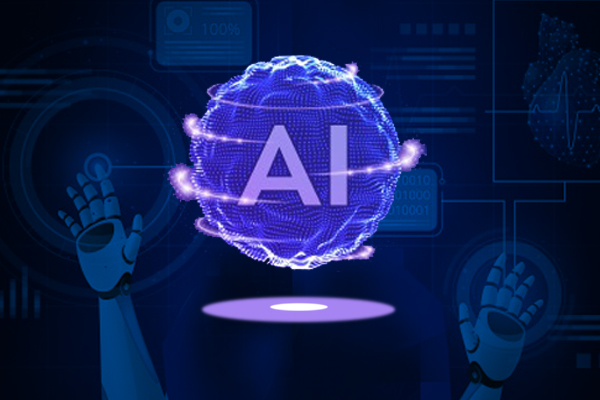While the potential ROI from investing in artificial intelligence and machine learning is abundantly clear to enterprise leaders, the actual adoption of the technology has been slower than you would believe. Yes, some very prominent brands across industries are leveraging it to drive significant revenues. But a 2018 survey by IDG finds that only 1 out of 3 AI projects across organizations actually succeed.
Here's a look at the three key challenges that enterprises are faced with on the AI adoption curve and how to get past them.
1. The Strategic Challenges: Use Cases and Ownership
Choosing the Right "First" Problem to Solve
Investing in AI/ML is a big decision for most enterprises, and there is the expectation of seeing some significant ROI from it within the first six to eight months. For that to happen, it’s important to choose the right business use case to optimize with AI/ML.
A lot of enterprises in the initial stages make the mistake of leveraging the technology for smaller fringe projects or choose projects where one can see some ready data available that is clean and categorized. However, while choosing a "small" first project is a good idea, ROI can be showcased only if the project is a key part of the core business.
How to Solve
So your basic sample set of use cases to choose from should only comprise of tasks that are a part of your key enterprise revenue streams. Out of these, identifying the right use case to test and showcase the power of AI/ML solutions can be done by answering a few guiding questions:
- Which tasks involve making decisions based on searching and analyzing a huge amount of data — historical or real time? For example, customer service, customer experience personalization, and analyzing sales data.
- Which tasks have a low tolerance for errors? For example, sensitive manufacturing processes or verification workflows that ensure compliance with various industry standards.
- Which tasks are repetitive and time and effort intensive, but have to be performed at scale nevertheless? For example, identifying and tracking counterfeit products.
Picking a task that fulfils any one or more of the above criteria is a great use case to test out your first AI/ML solution. That’s because, in each of these cases, a successful solution deployment will lead to very tangible benefits — better decision making, near-zero errors, or reduction in operating costs by eliminating resources employed in repetitive processes.
Yes, you will need to have the right type of data in place to even begin creating an AI-powered solution, and several other factors have to fall in place for it to be successful. However, you’ll at least have ensured that when the solution does succeed, it’s compelling enough for stakeholders to take notice.
Owning the AI/ML Adoption Piece
The PwC Digital IQ report points out that of late, 68 percent of an enterprise’s technology expenditure is outside the CTO's budget. This means that business stakeholders across marketing, sales, HR, accounting, etc. are independently investing in technology solutions. And there are high chances that some of these are AI/ML-based.
So, you have the emerging tech being used in some aspect of the business without the core IT team or the larger enterprise being aware of it. Any significant benefits accruing out of these solutions are also not being shared across the organization.
Additionally, new stakeholders within the enterprise who partly own certain technology pieces like the Chief Digital Officer or Head of Data and Analytics also have significant say in the AI/ML adoption conversation.
These factors combined mean that there is no single person owning the AI/ML adoption piece within the enterprise. Whether this is due to lack of any ownership or because of multiple deciding voices, the result is the same — a bottleneck in effectively rolling out solutions based on these emerging technologies.
2. The Technology Challenges: Data and IT Infrastructure
Where Is the Data?
AI/ML solutions cannot be created without data, a lot of data that is clear, correct, structured, and accessible. However, while enterprises do have volumes of data, it often falls short in terms of the other characteristics. A few common challenges seen in this regard are:
- Data is collected in silos across different business functions — collected in various formats and stored across different databases. And while that’s ok, the problem is the absence of a single unified repository from where this data can be accessed.
- Unstructured data, meaning a mass of data points with no explanation as to what they represent. This lack of context and categorization makes the data redundant for machine learning. If there are no markers for what an ML algorithm is supposed to learn from this data, there is no solution to be created.
- Missing or incomplete data, i.e there’s information available for all parameters in some cases while missing for certain parameters in other cases in the same data set. These inconsistencies result in skewed or faulty learning, which ultimately leads to failed solutions.
How to Solve
AI/ML solutions designed specifically for decision making, analytics, predictive maintenance, etc. require complete and clean datasets for effective learning.
So, it is critical to map out the complete range of data required to create such a solution for the chosen business use case. If enterprises have this ready, great. If not, they should take the time to harness, clean, and prepare the right datasets so as to ensure success.
Besides this, implementing a data lake architecture, with well designed landing, curation and processing, will go along way in ensuring that you are leveraging the full gamut of your enterprise data.
The IT Infrastructure Is Outdated and Unprepared
A McKinsey report finds that organizations that are ahead in their digital transformation journey are also the ones successfully adopting AI solutions. This means that an outdated IT infrastructure with clunky legacy systems is a core challenge to AI/ML adoption.
How to Solve
Given how important data is in this whole scheme of things, the data engineering tech stack has to be the best you can get. This means putting solutions in place that can:
- Identify the disparate sources of data and also classify them as structured or unstructured data
- Pull this data from the different databases and clean it as per the requirements of the project
- Bring it all to a central repository where it can be processed into useful information and training datasets for ML algorithms
Depending on the existing technology stack of any enterprise, this could mean different things:
- If you already have different tools and systems at play that collect, clean, and structure data, you would need to engineer them to work with a central repository.
- Solve challenges around storing massive volumes of training and generated data, with data lakes, cloud computing, and edge computing.
- If your disparate databases host a combination of structured and unstructured data, you would need to significantly overhaul your data collection, processing, and storage infrastructure.
Going beyond that, enterprises also have to prepare hardware and software assets that can effectively deliver AI/ML-based solutions.
3. The Resource Challenge: Skilled Teams
Finally, successful AI/ML adoption depends on having a skilled team of professionals who can work to create the right solutions. But because the explosion of practical applications of AI is only a decade old, it’s difficult to find people with the right set of skills. According to the State of Artificial Intelligence report 2017 by Terradata, 34 percent of enterprises state that lack of talent is a key barrier to AI adoption.
How to Solve
The solution here would tie in with the need for a single stakeholder to own AI/ML adoption within the enterprise. They can identify the data science and allied skills gap within the organization with reference to the goals they are trying to achieve and then work with the relevant departments to hire or build the right skills into the organization.
In the meantime, it would be best to work with technology partners who offer skilled AI/ML teams. That’s because:
- A skilled team taking on a first AI project creates a reliable process roadmap for the internal teams to follow once they are in place.
- Any roadblocks that crop up in the course of the project are easier resolved by an expert team without resorting in too much trial and error.
- An outside team will be able to get a bird’s-eye view of the complete technology infrastructure and suggest necessary changes in one go.
Almost every enterprise, irrespective of the industry, will have AI/ML solutions as a key part of their technology landscape over the next five years. However, to ensure that the emerging tech is actually delivering on its potential, a well-planned adoption plan will be critical. This will include tying in the strategy, technology, and resource perspectives to roll out a roadmap that an enterprise will follow. The omission of any one of these aspects could delay successful AI/ML adoption and could hurt the bottom line, especially considering the fact that your competitors could be doing it better and faster.
As an Advanced Consulting Partner in the Amazon Web Services Partner Network, Srijan has certified AWS professionals AI solutions like Lex, Sagemaker, Deep Lens and more. Srijan teams are also adept at leveraging Tensorflow, Python, Hadoop and other associated technologies to engineer niche solutions.
Ready to explore opportunities with AI and machine learning? Book a consultation with our experts.
Our Services
Customer Experience Management
- Content Management
- Marketing Automation
- Mobile Application Development
- Drupal Support and Maintanence
Enterprise Modernization, Platforms & Cloud
- Modernization Strategy
- API Management & Developer Portals
- Hybrid Cloud & Cloud Native Platforms
- Site Reliability Engineering





